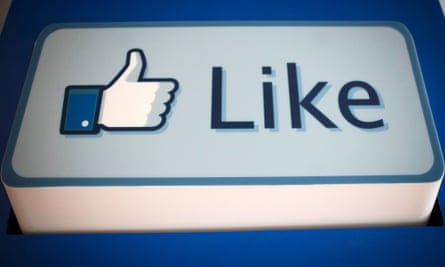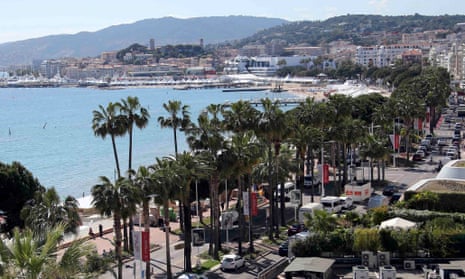One of the oddest things about advertising is our continued focus on ourselves and not the general population. We’re a relatively closed industry: we drink in the same pubs; we have industry gossip magazines; we seek to impress our bosses and keep our clients happy and think endlessly about the brands we work with. But we are detached from the reality of what real people think about them. If we’re honest, as an industry, we prefer to be aligned facing our clients, not real people. We host endless debates about how fast digital will grow, whether TV is dead, what to do with iBeacons, but rarely do we focus on the public and how their behaviours are changing. No place demonstrates this more than the Cannes Lions festival.
Around 2010, I did something we rarely do, I spoke with members of the public about what they felt were the best ads of the day. Disturbingly, the ones they all liked, found funny and remembered, were terrible ads. They were dancing cars, talking babies, it was clear how little they knew about what was good advertising.
The last few Cannes Lions festivals show all the signs of the industry unbundling itself further from reality. At a time when businesses face existential challenges, we seem determined to provide silly, self-serving solutions. Fast moving consumer goods (FMCG) companies face the threats of apathetic audiences, private labels, and the fact that people wouldn’t care if 74% of brands disappeared for good. Nivea, in their genius, made a handful of near field communication (NFC) sun bracelets that probably few people have ever touched and it wins countless awards.
British Airways suffers from having its prices undercut by increasingly decent low-cost airlines, the deflationary effects of price comparison websites, and having the desperately crowded Heathrow airport as a base, not to mention having terrible customer support by phone. Given this context, I’m not sure how its admittedly clever ad campaign, using digital billboards in London, would have done much to change their sales or brand perception.
Is anything in Cannes real?

We’re in the middle of a total distortion in reality. There is no overlap between the brands and campaigns I read about in the press and those that the public (or myself) actually experience.
I’ve never met anyone who has seen a vending machine reward them for laughing, I’ve never walked through a door marked ugly, got a Coke from a drone, or been offered a crisp packet with my face on. I’ve never had a friend share their personalised film, I’ve not seen outdoor ads that are also street furniture or had an ATM give me a funny receipt. I’ve not received a magazine with a near field communication thing and I’ve not had a virtual reality experience outside advertising conferences. I’ve not once seen a member of the public 3D print anything. The one thing that binds together the more than 200 Cannes winners I’ve seen, is that they are ads only advertising people have a good chance of seeing. I’m not sure that’s what the industry should be about.
Formulaic entires
Cannes has become a self-serving fetishisation of the newly possible and the highly improbable. It’s predictable and formulaic in the extreme. Some traditional media to drive a hashtag to create a participation movement fulfilled by a drone, filmed in 4K and overlaid with happy music, and “our best sales results” ever. It’s a user-generated content initiative producing a personalised 3D trinket of which people upload images to Instagram. It’s the hidden camera footage of reactions to something surprising and your chance “to have a conversation with a brand” by remixing the footage online, on Twitter, on mobile, or something called MaVeNS.
Flimsy measurement
I know Cannes is not the Effies, but this doesn’t mean we should be happy to look like idiots. Results are placed into Cannes Lions cases studies as the sort of final scene in an entry film to make the viewer feel good. The results are typically meaningless: “happiest client ever”, “strongest results” or based on metrics of no merit “20,000 likes garnered”. Or what bothers me most, just plainly untrue: “Our Google Cardboard initiative lead to the companies share price going up 10%.”
We need to remember that thanks to click farms and the industry around them, it’s impossible for any campaign to fail in 2015. Want to get 10m views on Facebook, cut a cheque for £2,000. If you are struggling for entries to your user generated-content, needing likes, wanting followers, any success these days is possible for a low price.

Celebrate only one
I’m amazed that as the industry has become more complex, more intertwined and categories less logical that we somehow are comfortable with rewarding any one single agency or team. For me if two people or one agency are responsible for an idea, at the expense of the media agency, client, PR team, coders, then something has gone wrong. We’re in an industry that needs teamwork now more than ever, awards should celebrate working together, not egos.
A way forward
If I had my way, Cannes would be about the little sparks of genius that make a difference. Regardless of whether you love or despise it, one has to acknowledge that Protein World got a nation talking about fitness, Uber now pulls real-time information into Google Maps to offer users a better journey, Finnair now sells-out of all its business class seats thanks to automated upgrade SMS messages to loyalty members, Sonos is brilliant because of it’s incredible user interface (UI).
But where do these belong in the Cannes award system? A SMS to a contact list isn’t advertising because it’s not paid media. Protein World can’t win because the ad was ugly and Uber’s thing isn’t an ad because it’s just an API (application programming interface) in an app.
We need to rethink our concept of advertising and challenge the boundaries of where our good ideas can live. Cannes should reflect these new and exciting times, not celebrate the worst of an industry that’s in love with technology and itself, not the people it purports to sell to.
Tom Goodwin is the senior vice president of strategy and innovation for Havas Media
To get weekly news analysis, job alerts and event notifications direct to your inbox, sign up free for Media Network membership.
All Guardian Media & Tech Network content is editorially independent except for pieces labelled ‘Advertisement feature’ – find out more here.
- This article was amended on Tuesday 9 June. An earlier version incorrectly stated that UI can’t win a Cyber Lion
